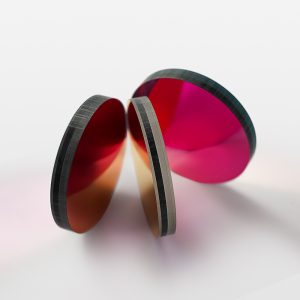
NBP365 ultra-narrowband filter is an ultraviolet bandpass optical filter. Since the wavelength of 365 nanometers is in the ultraviolet light region and has strong energy, NBP365 ultra-narrowband filter can capture 360nm light to a limited extent and can be used in various ultraviolet product-related applications, such as fluorescence detection, ultraviolet curing, ultraviolet disinfection, photolithography, ultraviolet spectral analysis and other applications.
Model: NBP365 narrow band filter
Specifications: Customized
Material: Optical Glass
Conventional parameters
Center wavelength: 365nm±5nm
Peak transmittance: T>80%
Bandwidth: 5~10nm
Cut-off band: 200~1200nm
Cut-off rate: T<0.1%




Product Advantages
NBP365 ultra-narrowband filters usually use the interference principle of multi-layer dielectric films to achieve selective transmission of wavelengths. By precisely controlling the thickness and refractive index of each layer of dielectric film, light of a specific wavelength can be reflected and interfered multiple times between the film layers, thereby achieving enhanced transmission of the wavelength, while light of other wavelengths is suppressed due to different phase differences. On the basis of highlighting the characteristics of narrowband filters, the optical performance is independent of the thickness of the substrate. The NBP365 narrowband filter is more convenient for built-in instrument imaging systems, so that its optical performance can be improved and effectively applied. Its own special optical material substrate solves the problems of traditional absorption synthetic glass being prone to mold and unstable optical performance.
Transmittance wavelength characteristics (reference data)

Applications
Ultraviolet fluorophore detection: used to excite fluorescent dyes with wavelengths around 365 nm, such as Hoechst, DAPI, etc. to improve the sensitivity and accuracy of fluorescent signals.
Fluorescence microscopy: used in fluorescence microscopy to separate the wavelengths of excitation light or emission light to ensure image clarity and contrast.
Molecular biology and chemical analysis: wavelength selection in DNA staining detection, protein labeling analysis and other biochemical detection.
Spectrometer and flow cytometer: precise spectral separation application to ensure that only specific bands of fluorescent signals are detected.












